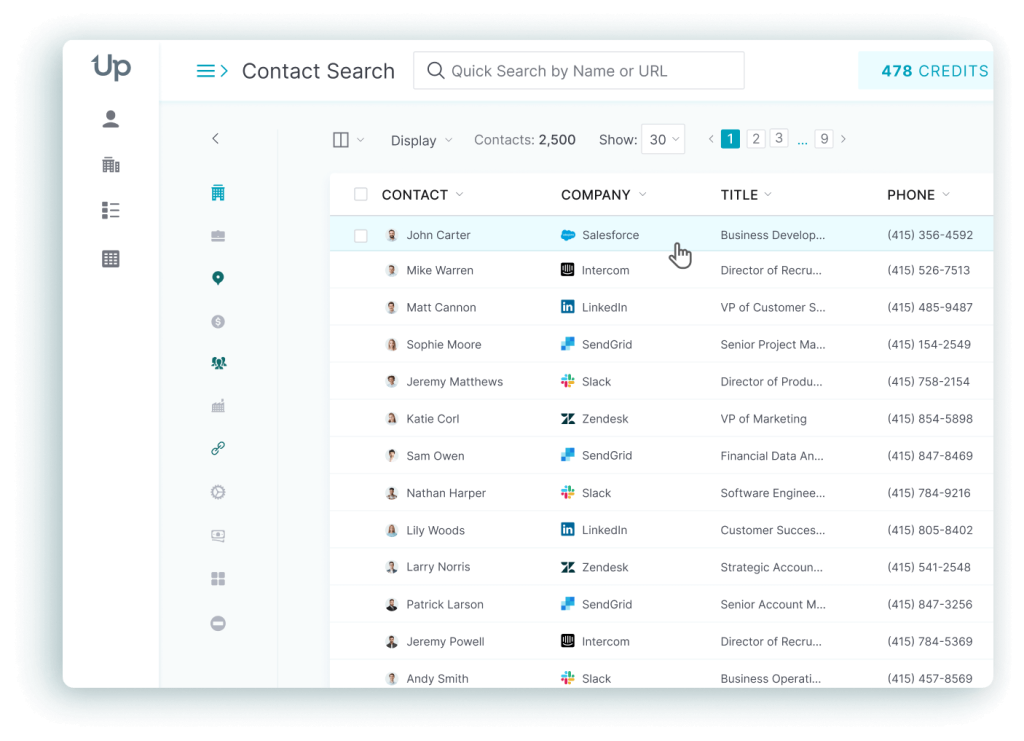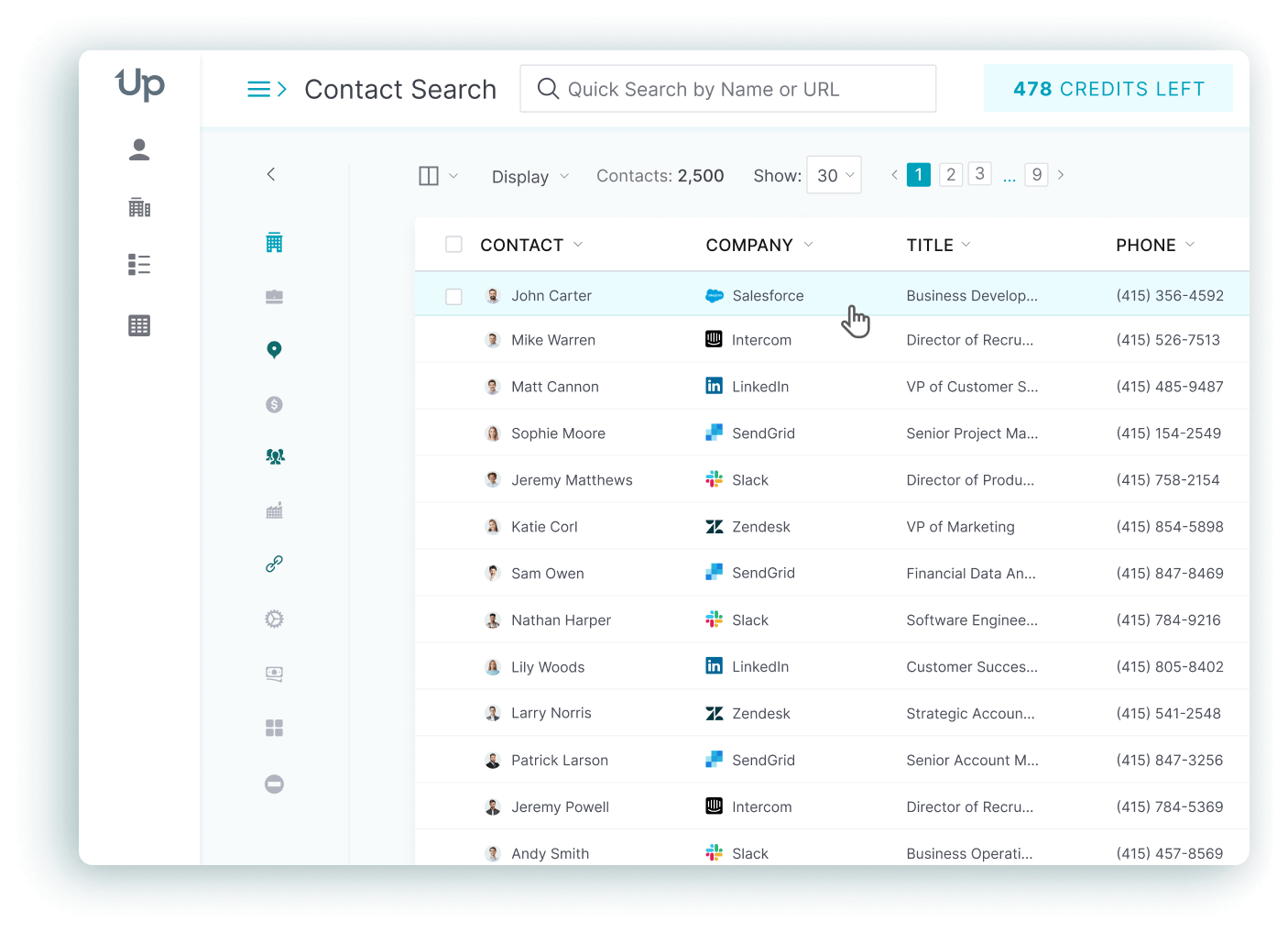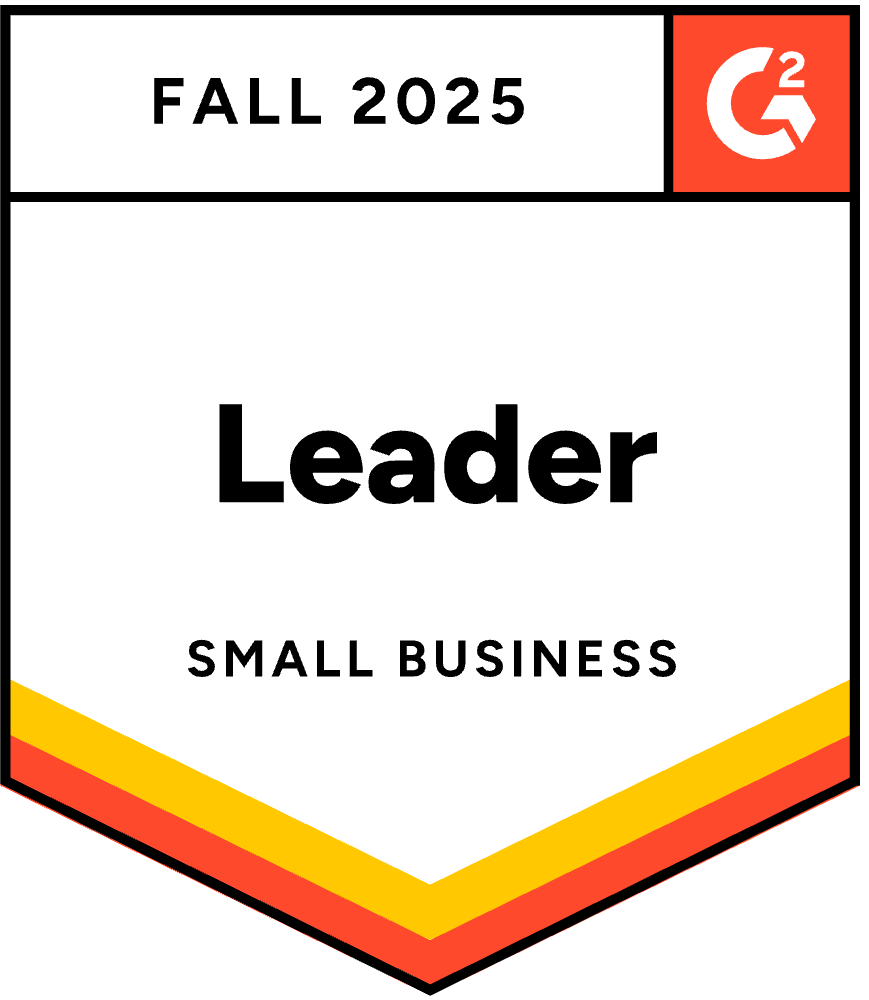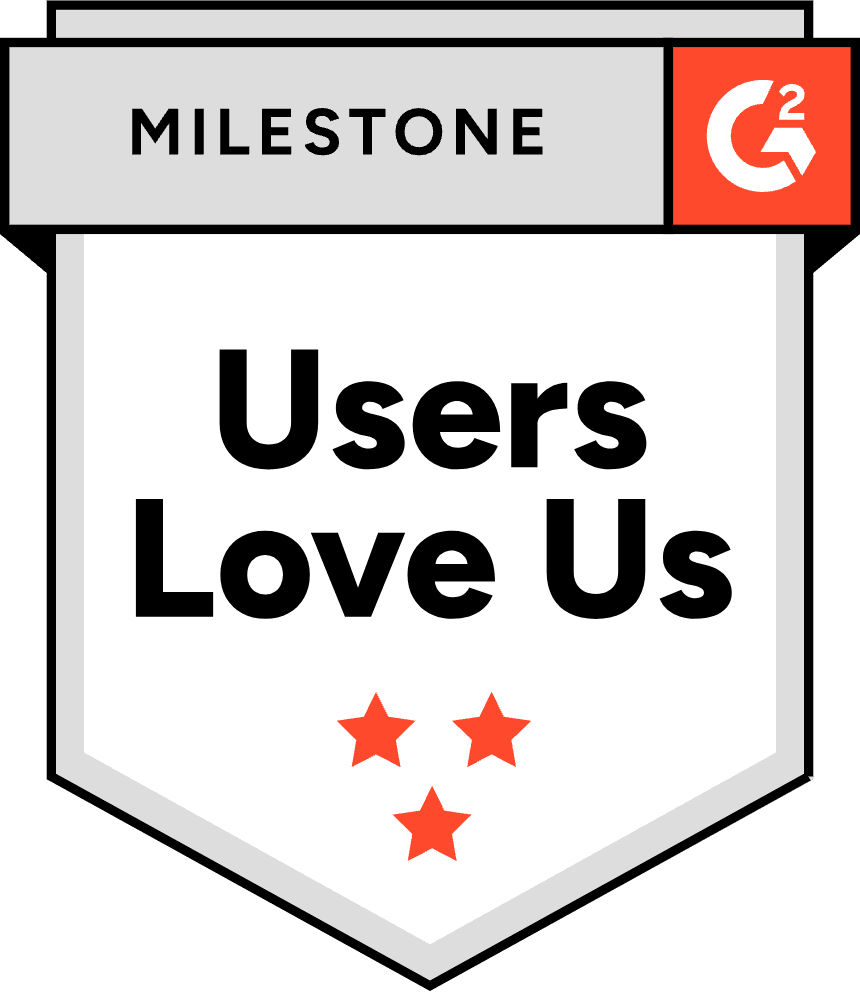Are you struggling to identify and convert potential customers into paying clients? You’re not alone. 79% of marketing leads never convert into sales, often because businesses can’t distinguish between genuine prospects and tire-kickers.
In this comprehensive guide, you’ll discover what sales leads really are, how to qualify them effectively, and 12 proven strategies to generate high-quality prospects that actually close. We’ll cover lead types (IQL/MQL/PQL/SQL), qualification frameworks (BANT, MEDDIC), cost benchmarks for 2025, and compliance essentials to build a predictable revenue engine.
What Is a Sales Lead?
A sales lead is an individual, department, or company that has expressed interest in your product or service and fits your ideal customer profile but has not yet been fully qualified by sales. In practice, the term can also refer to the contact data that identifies that potential buyer.
Sales Lead vs. Prospect vs. Opportunity: What’s the Real Difference?
Understanding these distinctions is crucial for sales and marketing alignment. Each stage represents a different level of qualification and sales readiness, requiring different approaches and resources.
- Lead: A contact that shows initial interest through actions like filling out a form, downloading content, or visiting your website. They haven’t been vetted by your sales team yet and may not even know they have a problem your solution can solve. Think of someone who downloads a whitepaper about “productivity tips” but hasn’t indicated they’re looking for software solutions.
- Prospect: A qualified lead with confirmed two-way engagement and clear fit signals. They’ve been researched and vetted, showing both interest in your solution category and characteristics that match your ideal customer profile. A prospect might be someone who attended your webinar, asked specific questions about implementation, and works at a company that fits your target market.
- Opportunity: A sales-accepted prospect tied to a specific potential deal in your CRM with defined parameters like budget, timeline, and decision-making process. This represents an active sales conversation with clear next steps and measurable probability of closing.
The progression flow: Lead → Qualification (scoring + discovery) → Prospect → Opportunity → Customer. Each stage should have defined criteria and handoff processes to ensure nothing falls through the cracks.
What Are the Different Types of Sales Leads?
Sales leads can be categorized along two key dimensions: temperature (how engaged they are) and qualification stage (how vetted they are by your marketing and sales teams).
By Stage
| Type | Definition | When to use |
| IQL | Gated-content exchangers in early research | Nurture with education |
| MQL | Engaged with marketing; signs of readiness | Hand-raise paths + scoring |
| PQL | Free trial/freemium users showing buying signals | In-product prompts + AE assist |
| SQL | Vetted by sales; intent + fit confirmed | Pipeline & proposal stage |
By Temperature
| Type | Definition | Characteristics |
| Cold Leads | People who fit your ideal customer profile but haven’t shown interest in your solution yet | Require significant nurturing and education |
| Warm Leads | Contacts who have shown some interest through actions like visiting your website, downloading content, or attending a webinar | Aware of their problem and exploring solutions |
| Hot Leads | Highly engaged prospects showing strong buying signals like requesting demos, asking about pricing, or comparing your solution to competitors | Ready for direct sales engagement |
How Do You Qualify Sales Leads Effectively?
Lead qualification is the process of determining whether a prospect is worth your sales team’s time and effort. Without proper qualification, your reps waste time on leads that will never convert, directly impacting quota attainment.
Here are two proven qualification frameworks that help you identify high-quality prospects:
BANT Framework
BANT (Budget, Authority, Need, Timeline) was developed by IBM and works best for straightforward, transactional sales:
Budget: “What’s your budget range for solving this problem?”
Authority: “Who else is involved in this decision?”
Need: “What’s driving you to look for a solution now?”
Timeline: “When do you need to have this implemented?”
MEDDIC Framework
MEDDIC is designed for complex, high-value B2B sales with multiple stakeholders and longer sales cycles:
Metrics: What measurable impact will your solution provide?
Economic Buyer: Who has the final budget authority?
Decision Criteria: What factors will determine their choice?
Decision Process: What steps must they follow to make a purchase?
Identify Pain: What specific business problem are they trying to solve?
Champion: Who internally advocates for your solution?
Which to use? Use BANT for shorter, transactional cycles; use MEDDIC for complex, multi-stakeholder B2B deals.
How to Generate High-Quality Sales Leads: 12 Proven Strategies
1. Use a List Building Software
The easiest, fastest way to generate leads is through list-building software. List-building software lets you browse through an extensive business database to find the data you need when you need it.
However, since list-building software is all about the data, it’s only as useful as the data it can give you. That’s why it’s always a good idea to use a lead generation tool that guarantees its data, so you know you’re paying for accurate information.
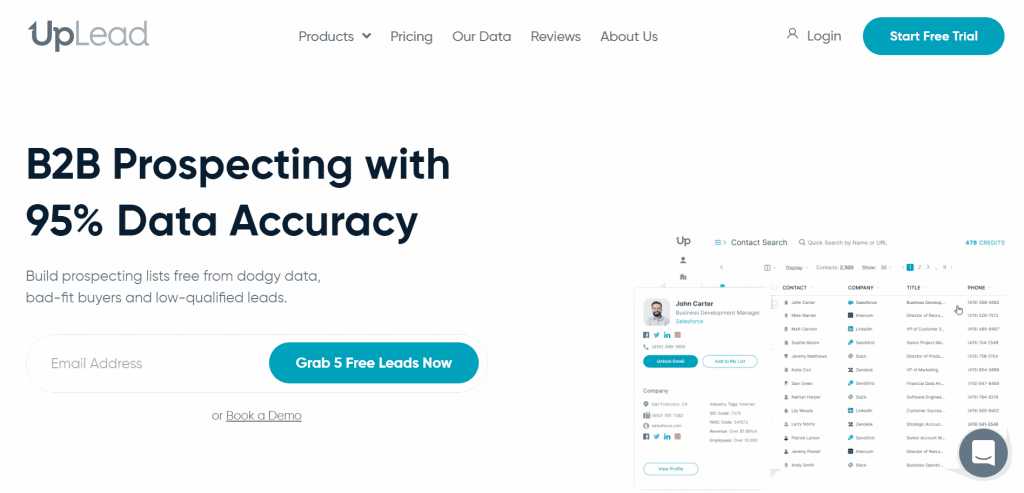
Using UpLead is easy. You can buy all the leads you need and find the right contacts in multiple ways, such as the following:
How to evaluate a lead database (quick checklist):
Accuracy policy (guarantee?), verification cadence, GDPR/CCPA/TCPA stance, technographic/intent coverage, credit rules (email vs phone), and CRM/SEP integrations.
How to Build a Hyper-Targeted Lead List in 3 Minutes
Mini-Case Study 1: Finding In-Market Tech Buyers
Imagine finding VPs of Engineering at Series B SaaS companies in the US that use Amazon Web Services (AWS) but not your competitor, Datadog. Here’s how:
Steps:
1. Set Industry to ‘Software’ and Funding to ‘Series B’
2. Add ‘VP of Engineering’ to Job Titles
3. Use Technographics filter to include ‘Amazon Web Services’ and exclude ‘Datadog’
Result: With UpLead’s technographic filters tracking over 16,000 technologies, you can generate a list of over 200 decision-makers in under a minute. Based on user results, a 25% reply rate is a realistic goal.
Mini-Case Study 2: Refreshing Stale Leads
Our CRM had 1,000 leads from a 2-year-old tradeshow. Instead of deleting them, I exported the list and used UpLead’s Data Enrichment to append over 50 data fields.
Result: UpLead appended fresh job titles, companies, and verified emails for 88% of the list. We discovered 120 of them were now in decision-making roles at new companies. This simple enrichment pass salvaged the list and led to 7 booked demos.
Get started with UpLead for free today.
Lead generation doesn’t have to be all that painful. With UpLead, you can easily connect with high-quality prospects and leads to grow your company.
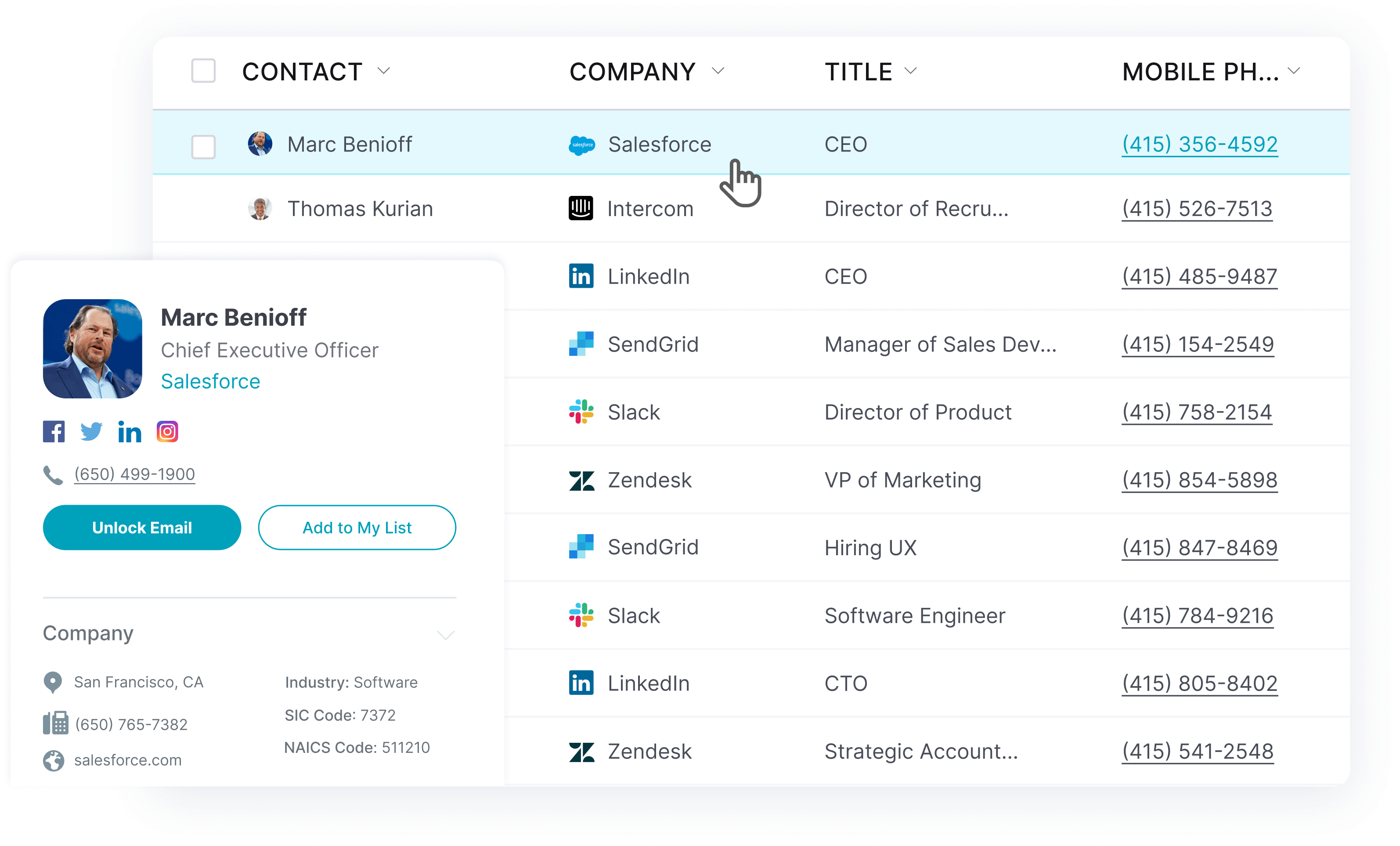
2. Build Relationships through Email Marketing
Email marketing is a very cost-effective way of generating sales leads, assuming you have the right email addresses to get started.
Once you’ve generated an email list, it can be easy and even tempting to send a massive email to all those addresses, trying to convince them to buy your product or service. However, that de-personalized approach will rarely get you good results.
Instead of sending bulk emails to each lead, start by segmenting your email list. Identify where each lead is in their purchasing journey. Then address their pain points and show how your solution can alleviate them.
You may want to handle the best-qualified leads through single, personalized emails while placing the rest of your subscribers into the right email marketing campaigns to nurture them into a purchase.
Whatever approach you take, make it as personalized and relevant to the user as possible.
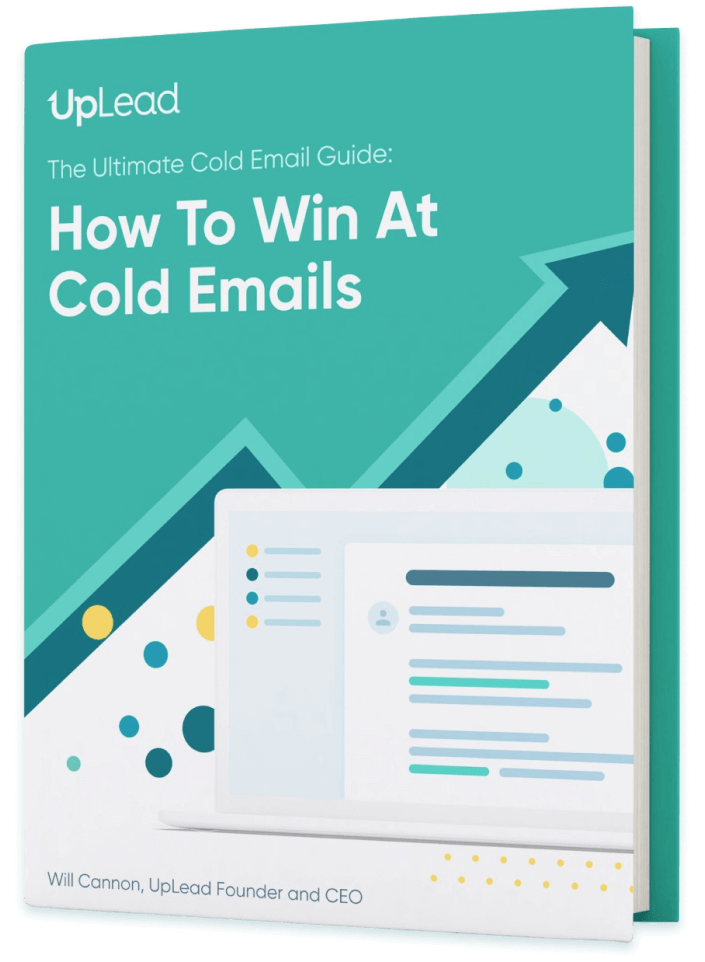
I agree to receive emails from UpLead, and can unsubscribe at any time.
3. Engage Appropriately with Prospective Customers on Social Media
Social media is a powerful tool to keep your user base informed and engaged. However, not everyone takes the time to develop their approach properly.
Instead of updating your LinkedIn or Twitter business profiles sporadically, develop a plan to keep them updated constantly. Research to find out who your user base is, what their needs are, and why they follow you on social media in the first place. Then plan the content you’ll be posting for the month.
Certain tools will even allow you to consolidate all social media to one place, scheduling posts for you so you only have to spend a few hours to get it ready.
Pro-Tip: Turn LinkedIn Views into Verifiable Leads
Don’t just rely on InMail’s low response rates. Use the UpLead Chrome Extension while browsing LinkedIn Sales Navigator. The UpLead Chrome extension now works with Sales Navigator and Recruiter, allowing you to instantly find verified email addresses and direct dial phone numbers without leaving the LinkedIn page.
When you find a perfect-fit prospect, one click reveals their verified contact details including mobile and direct dial phone numbers. You can then reference their recent LinkedIn post in a personalized email, moving the conversation to a more direct channel and bypassing the noise of the LinkedIn inbox.
Keep measuring your success by finding which posts create more engagement and using these to continue improving your social media approach.
4. Diversify your content across the right channels for your audience
Not all content is created equal. Some content will do wonders for a certain segment of your audience while remaining completely irrelevant to a different segment.
For instance, some members of your audience may follow you on Instagram to briefly engage with your visual content. A different segment may subscribe to your newsletter because they want deeper industry information.
Discover the content that resonates best with your audience while staying true to your brand.
If you can diversify your content through many channels, you’ll be able to generate leads from multiple backgrounds and with various needs.
5. Use Search Intent to Attract In-Market Leads
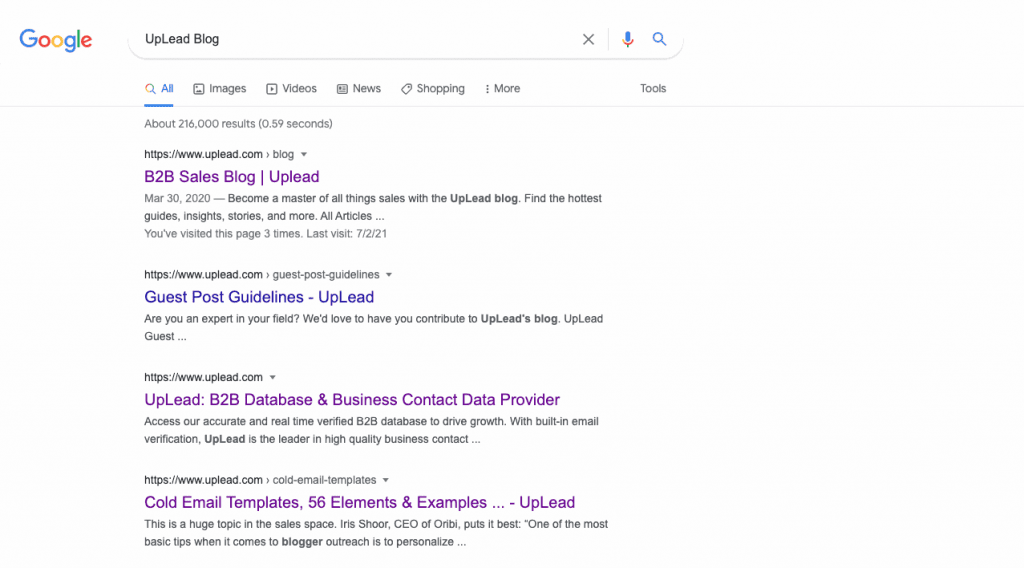
When it comes to generating sales leads (and marketing in general), SEO is key. Improving the visibility in search engines of your website and creating content that can generate leads organically is priceless.
While SEO may not immediately generate leads, it can revolutionize your lead generation process, making it more cost-effective and efficient than any other approach listed here. Average Google Ads CPL in 2025 is $70.11 organic content that ranks for bottom-funnel queries can materially lower blended CAC.
You can use SEO tools such as Ahrefs or SEMRush to crawl your website and find areas that can be optimized. Then, figure out which long-tail keywords you can target to start creating content around those keywords.
UpLead in Action: SEO tells you what people are interested in; Intent Data tells you which companies are actively researching those topics right now. Inside UpLead, you can select from over 10,000 intent topics like ‘CRM Software’ or ‘Cybersecurity Solutions’ with data refreshed weekly. This feature can be layered with UpLead’s 50+ other filters including industry, job title, and technographics.
By combining this with your ICP filters, you’re not just finding companies that fit your profile you’re finding companies that are actively signaling they are ready to buy. This is the difference between cold outreach and perfect timing.
Don’t forget to perform SEO audits at least a couple of times per year to make sure you’re keeping your website (and content) as optimized as possible. Also, make sure that you monitor your keyword rankings using a rank tracker such as Keyword.com in order to measure your SEO performance.
6. Partner with Other Businesses in Related Niches
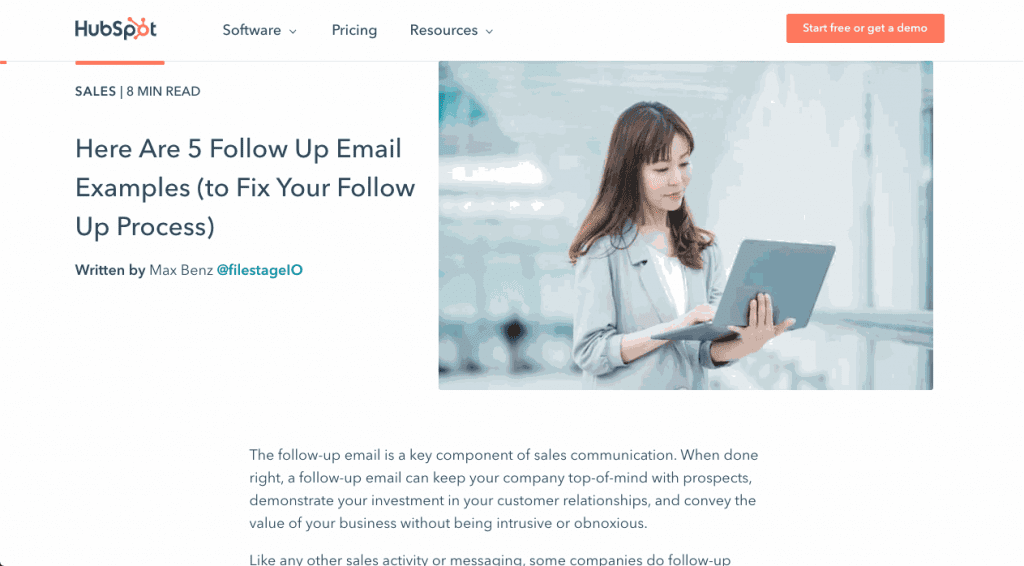
Partnering with other brands that share your target audience can be extremely beneficial, as it exposes all partners to audiences that wouldn’t have heard of them otherwise.
A simple way of doing this is by guest posting on other brands’ blogs. To be a guest poster, contact the brand you’re interested in working with and let them know which topics you’d like to write about for them. Good content is expensive and hard to come by, so make sure you send the best samples of your work to convince them to partner with you.
In the example above, you can see one of our guest posts with HubSpot that has been quite effective for lead generation through mutually-beneficial partnerships.
You can also partner with other brands through affiliate marketing. This allows other companies to link to your products and services in exchange for a commission on each purchase made through those links.
Whichever approach you take, make sure to always ask yourself which audience you’re hoping to attract, how your partnership will fit within your brand, and how much effort you’ll have to put in to get the results you’re aiming for.
7. Publish Original Research, White Papers, and Case Studies to Attract Savvy Customers
Original research is extremely valuable as a lead generator. It can help you increase your backlinks, position your brand as an authority, and most importantly, attract highly qualified leads to your company.
However, original research is also expensive and hard to perform. That’s why you should focus on performing research that’s highly relevant to your target audience.
Through data-driven decisions, find knowledge “holes” that you can fill with your own research. This can range from a simple case study of a customer you’ve helped to a full-blown market study on a particular topic.
Remember to keep the research as reliable and trustworthy as possible to properly build up your company’s image.
8. Answer Queries from Potential Buyers on Forums like Quora
Online forums like Quora and even Reddit can expose your brand to a large number of potential leads for a long time.
The trick to writing a good answer to a query is to sell as little as possible. You may even want to avoid the sale altogether, and instead, list your company under your username for anyone who wants more information.
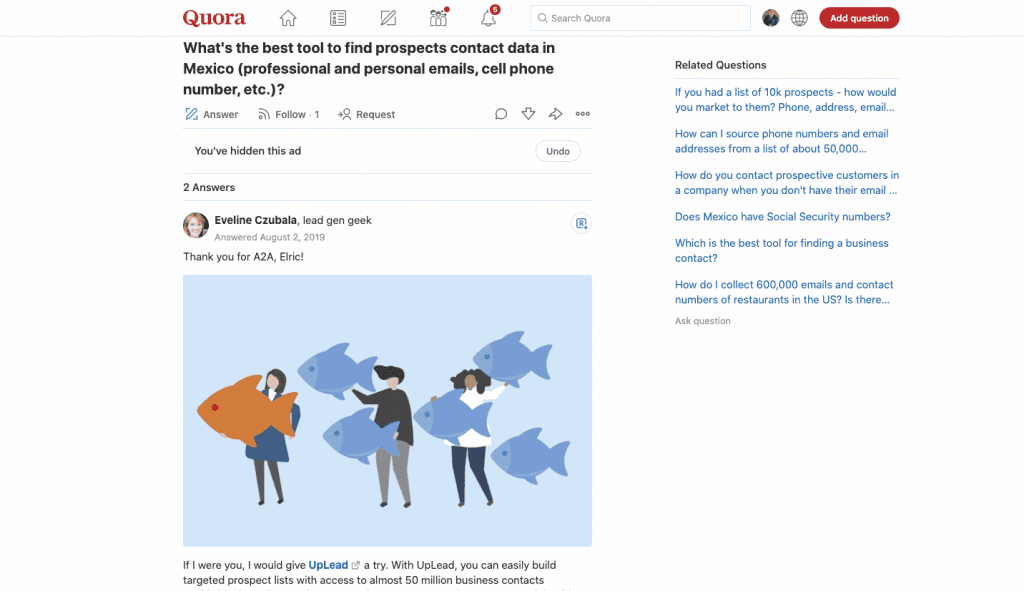
Use your inbound marketing skills to answer queries as perfectly as possible, while leaving the sales pitch until the end, almost as an afterthought.
No one likes feeling like they’re being sold to. Focus on providing the best answer to questions, and make sure to leave a way for leads to contact you if they want to know more about your solution.
9. Foster Positive Customer Reviews to Improve Reputation
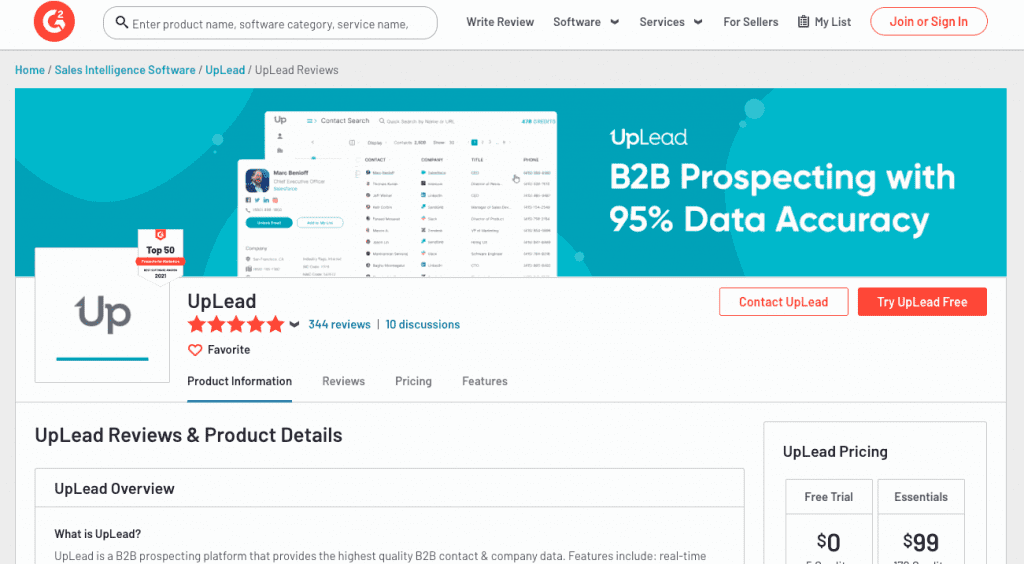
Customer reviews validate your company. They demonstrate how an existing customer has benefited from your company, making it easy for potential customers to visualize how you can help them.
The easiest way to get customer reviews is by simply asking for them. While you can offer users an incentive to rate your business, often the best and most genuine customer reviews are the ones that users actually want to write.
Find your happiest, most satisfied customers in your customer relationship management software, and ask them for a simple review. If you’ve done a good job with customer support, they’ll likely be happy to write glowing reviews for you.
10. Nurture a Sales Funnel that Converts Prospects Into Customers
Most leads will not be immediately ready to make a purchase. Instead, you’ll need to nurture them through targeted content.
Creating a blog is a great way to nurture and educate customers, ensuring that, when they’re ready to make a purchase, they purchase from you.
Create blogs and other lead magnets to capture and nurture your leads into conversion. This will ensure all stages of your sales funnel are accounted for and filled with leads and prospects.
11. Host Webinars and Virtual Events
Webinars are powerful for capturing leads who are in a learning and evaluation mindset. Average registration→attendance is ~57%.
Structure your webinars with a compelling title that addresses a key pain point, focus the main presentation on solving audience problems, and include interactive elements like live polls and Q&A sessions.
The post-webinar process is equally important: send follow-up emails to all registrants with the recording (since 63% of views happen after the live event), segment the attendee list for personalized nurturing, and use the registration data for targeted sales outreach.
12. Leverage Strategic Partnerships and Co-Marketing
Partnership marketing is a strategic collaboration between businesses to reach mutual goals, often centered around thought leadership content and events for B2B firms. Co-marketing with non-competitive companies that share your ideal customer profile can expose you to new, relevant audiences with an implied endorsement.
Popular co-marketing activities include co-hosted webinars, co-authored ebooks or whitepapers, joint surveys and research, and social media takeovers. You can also establish referral agreements as formal contracts where one company compensates a partner for generating qualified leads.
Ensure clear definition of qualified leads, commission structure, referral submission process, and marketing guidelines to make these partnerships successful.
Lead scoring 101
Combine fit (firmographics, role) + behavior (visits, demo request) to prioritize outreach. Start simple (100-point model), align score thresholds to MQL→SQL handoff, and revisit monthly.
How Much Do Sales Leads Cost in 2025?
Understanding the cost of sales leads helps you budget effectively and choose the right generation strategies. B2B cost per lead (CPL) varies significantly by industry and channel.
By industry (2025):
Legal: ~$650 CPL
Financial Services: ~$461 CPL
B2B SaaS: ~$188 CPL
Manufacturing: ~$391 CPL
By channel (current data points):
Google Ads (all industries): avg $70.11 CPL in 2025 (YoY +5.1%).
Webinars: registration→attendee rate ≈ 57%; strong B2B lead quality (ON24).
How to Manage and Nurture Sales Leads for Conversion
Generating a lead is only the first step. Effective lead management and nurturing are crucial for converting prospects into customers. Companies that excel at lead nurturing generate 50% more sales-ready leads at a 33% lower cost.
Here’s a proven 5-step lead management process:
1. Lead Capture: Generate and collect lead information from sources like web forms, social media, SEO, and paid ads. Ensure you’re capturing enough information to qualify and route leads properly.
2. Lead Scoring & Prioritization: Rank leads based on their sales-readiness by assigning points for attributes (job title, company size) and behaviors (email opens, website visits, content downloads).
3. Lead Distribution/Routing: Automatically assign leads to the right sales representative based on territory, expertise, or workload. Fast response is critical contacting a lead within an hour increases qualification chances by 7x.
4. Lead Nurturing: Build relationships with leads who are not yet ready to buy through multi-channel approaches including email sequences, retargeting ads, and personalized content.
5. Reporting: Track key metrics like response time, conversion rates, and pipeline velocity to measure effectiveness and identify improvement opportunities.
How to Measure Lead Quality and Campaign ROI
Vanity metrics are useless revenue is what matters. Here are three core metrics every sales and marketing team should track to prove the value of their lead generation efforts:
1. Lead Conversion Rate (LCR)
Formula: (Number of New Customers in a Period / Total Number of Leads in the Same Period) × 100
This tells you what percentage of your leads actually become customers.
2. Customer Acquisition Cost (CAC)
Formula: Total Cost of Sales & Marketing / Number of New Customers Acquired
This reveals how much you’re spending to acquire each new customer.
3. Customer Lifetime Value (CLV) to CAC Ratio
Formula: Customer Lifetime Value / Customer Acquisition Cost
A ratio of 3:1 is widely considered healthy, indicating the customer’s lifetime value is three times the cost of acquiring them.
Track these metrics consistently to optimize your lead generation strategies and demonstrate clear ROI to leadership.
Frequently Asked Questions About Sales Leads
Here are the answers to common questions about generating sales leads:
What is a good lead?
A good lead matches your ideal customer profile and shows clear intent signals like requesting demos or downloading relevant content. They have the budget, authority, need, and timeline to make a purchase decision.
How do you qualify a lead quickly?
Ask three key BANT discovery questions: “What’s your budget range for solving this problem?”, “Who else is involved in this decision?”, and “When do you need to have this implemented?” These quickly reveal if they’re worth pursuing.
Lead vs prospect vs opportunity?
Lead: contact that shows initial interest; not yet vetted. Prospect: qualified lead with two-way engagement. Opportunity: sales-accepted prospect tied to a potential deal in your CRM.
What is an example of a sales lead?
A sales lead is an individual or organization that has shown interest in a company’s product or service. For example, ‘Marketing Manager Mary’ who works at a mid-sized tech company, struggles with tracking team tasks, and fills out a contact form to download an ebook about project management software is a qualified lead for that software company.
What are the 4 main types of leads?
Information Qualified Leads (IQL) who exchange contact info for useful content; Marketing Qualified Leads (MQL) who have engaged with marketing efforts more deeply; Sales Qualified Leads (SQL) who have been vetted by sales and are ready for a direct sales conversation; and Product Qualified Leads (PQL) who have used a product and shown buying signals.
Why are sales leads important?
Sales leads are what keep your sales reps busy and engaged. They ultimately generate sales for your business. That’s why having a proper lead management process is vital to keeping your sales team engaged and your business thriving.
How do you get sales leads fast?
Quick methods include paid advertising (PPC) on search engines or social media, setting up live chat on your website to engage visitors immediately, and asking existing happy customers for referrals. List-building software like UpLead can also provide immediate access to verified prospects.
What is the difference between a sales lead and a prospect?
Sales leads are users who are likely to make a purchase but are yet to be contacted by your sales team. A sales prospect is a user you’ve found through your lead generation process and have already established two-way communication with.
Is buying sales leads legal?
In the US, buying leads can be legal if you comply with the TCPA, CAN-SPAM, state privacy laws, and applicable industry rules. The FCC’s proposed “one-to-one consent” requirement originally set for Jan 27, 2025 was vacated by the Eleventh Circuit and stayed by the FCC. You still need prior express written consent for autodialed/prerecorded marketing calls/texts, and you must honor revocation and opt-out rules. Always consult counsel for your specific use case.
Compliance Basics (US):
• TCPA: prior express written consent for autodialed/prerecorded marketing calls/texts; honor opt-outs.
• CAN-SPAM: accurate headers, physical address, easy unsubscribe.
• State privacy (e.g., CCPA/CPRA): disclosure/opt-out rules for selling/sharing personal data.
• The FCC’s one-to-one consent rule was vacated in Jan 2025; monitor ongoing FCC actions.
What is the difference between B2B and B2C sales leads?
B2B leads are other companies with longer sales cycles, higher purchase values, and multiple decision-makers, while B2C leads are individual consumers with shorter sales cycles, lower price points, and single decision-makers.
Is it possible to get sales leads for free?
Yes, you can get sales leads for free. If you don’t want to pay for leads, you can use SEO, keep your social media up to date, apply market research to develop relevant content, and even use free searches from tools like UpLead to generate quality leads.
How to track and manage sales leads
Your sales and marketing teams can work together using CRMs to keep track of your sales leads and integrate them with the rest of your lead generation tools.
How to follow up on sales leads
The best way to follow up with a sales lead is through relevant, personalized content. Keep “hot leads” in the loop by writing follow-up emails, and nurture your other sales leads through the right marketing efforts.
Conclusion
Mastering the complete sales lead lifecycle from definition to qualification, generation, management, and measurement is the key to predictable revenue growth. You need a solid lead generation strategy to identify and nurture sales leads into customers.
By implementing proper qualification frameworks like BANT and MEDDIC, leveraging the 12 proven generation strategies, and measuring your results with key metrics like CLV to CAC ratio, you’ll eliminate the costly problem of wasted time on low-quality leads.
Find your next qualified sales lead quickly and effectively with lead generation tools like UpLead, and start contacting them today.

